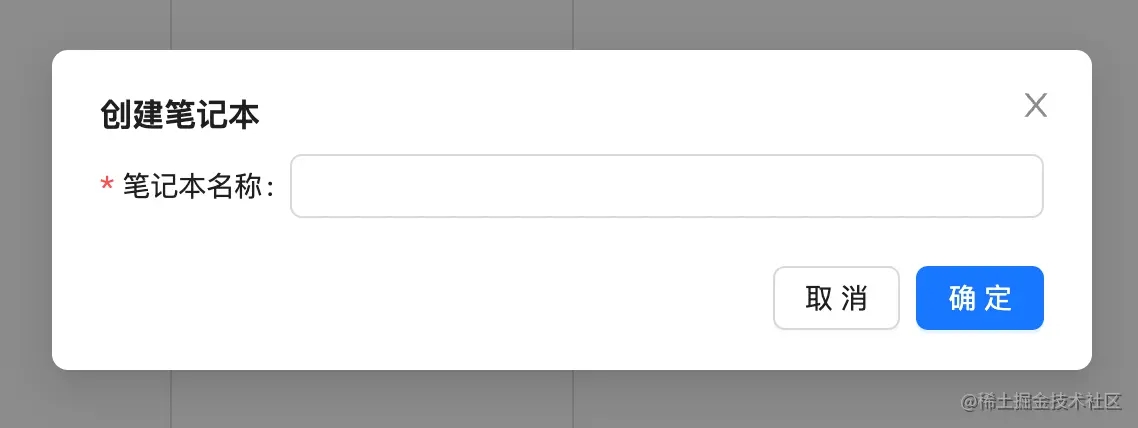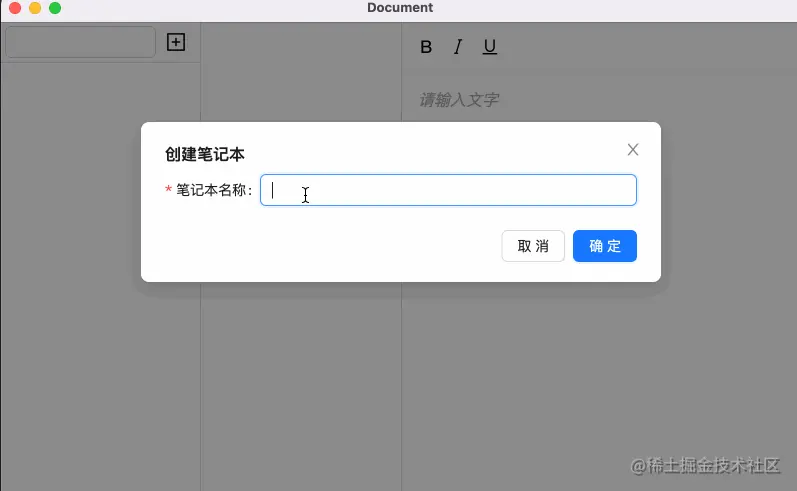详解Electron中如何使用SQLite存储笔记
目录
- 前言
- 数据库的选择
- 安装
- 创建表
- Service
- Controller
- 业务
- 总结
前言
上一篇,我们使用 remirror 实现了一个简单的 markdown 编辑器。接下来,我们要学习如何去存储这些笔记。
当然了,你也可以选择不使用数据库,不过若是你以后需要将该应用上架到 mac Apple Store ,就需要考虑这个了。因为上架 mac 应用需要启用 sandbox,当你第一次访问笔记中的媒体文件时,都要打开选择文件的弹窗,通过让用户主动选择来授权访问沙箱外的媒体文件。不过,如果你的媒体文件在第一次选择插入文档时复制到 sandbox 中,以后访问优先从沙箱容器中读取,那是不需要授权的。虽然我也可以这么做,但这里考虑到后面的功能,还是选择使用数据库,当需要导出笔记时再从数据库中导出。
数据库的选择
Electron 应用中常使用的数据库是 SQLite、IndexedDB,IndexedDB 是在前端网页中去操作。有的文章里说 IndexedDB 的性能会比 SQLite 更好,大家看实际场景去选择使用。大多数桌面应用或者 App 需要使用数据库的时候一般都是用 SQLite。
npm 上有两个最常用的 sqlite3 库,一是 better-sqlite3 ,一是 node-sqlite ,两种各有特点。前者是同步的 api ,执行速度快,后者是异步 api ,执行速度相对慢一点。值得注意的是,后者的编译支持 arm 机器,而且由于出的比较早,和其他库配合使用很方便。
安装
安装 node-sqlite
// 仓库名是 node-sqlite, package 名是 sqlite3 yarn add sqlite3
借助 Knex.js 简化数据库操作
Knex.js是为Postgres,MSSQL,MySQL,MariaDB,SQLite3,Oracle和Amazon Redshift设计的 SQL 查询构建器
安装 Knex.js
yarn add knex
创建表
现在,我们要开始设计数据库结构了。我们大概需要 3 张表,笔记本表,笔记表,还有一个媒体文件表。sqlite 支持 blob 数据类型,所以你也可以把媒体文件的二进制数据存到数据库中。这里我们就简单的记个 id ,把媒体文件存到沙箱内。
我们确定一下三张表的表名,notebooks, notes, media, 然后看一下该如何使用 Knex.js 创建表
import { app } from "electron";
import knex, { Knex } from "knex";
import { join } from "path";
import { injectable } from "inversify";
@injectable()
export class LocalDB {
declare db: Knex;
async init() {
this.db = knex({
client: "sqlite",
useNullAsDefault: true,
connection: {
filename: join(app.getPath("userData"), "local.db"),
},
});
// 新建表
await this.sync();
}
async sync() {
// notebooks
await this.db.schema.hasTable("notebooks").then((exist) => {
if (exist) return;
return this.db.schema.createTable("notebooks", (table) => {
table.bigIncrements("id", { primaryKey: true });
table.string("name");
table.timestamps(true, true);
});
});
// notes
await this.db.schema.hasTable("notes").then((exist) => {
if (exist) return;
return this.db.schema.createTable("notes", (table) => {
table.bigIncrements("id", { primaryKey: true });
table.string("name");
table.text("content");
table.bigInteger("notebook_id");
table.timestamps(true, true);
});
});
// media
await this.db.schema.hasTable("media").then((exist) => {
if (exist) return;
return this.db.schema.createTable("media", (table) => {
table.bigIncrements("id", { primaryKey: true });
table.string("name");
table.string("local_path"); // 本地实际路径
table.string("sandbox_path"); // 沙盒中的地址
table.bigInteger("note_id");
table.timestamps(true, true);
});
});
}
}
这里我用了一个 IOC 库 inversify, 后面遇到 injectable、inject、ioc.get等写法都是和这个有关,这里我就不多介绍了,具体用法可以看文档或其他文章。
注意:三张表中,note 和 media 都一个外键,这里我简化了,并没有用 api 去创建。
Service
数据库表创建完了,接下来我们为表的操作写相关服务,这一块我是参考传统后端 api 的设计去写的,有 Service(数据库) 和 Controller(业务),以 Notebook 为例:
import { inject, injectable } from "inversify";
import { LocalDB } from "../db";
interface NotebookModel {
id: number;
name: string;
create_at?: string | null;
update_at?: string | null;
}
@injectable()
export class NotebooksService {
name = "notebooks";
constructor(@inject(LocalDB) public localDB: LocalDB) {}
async create(data: { name: string }) {
return await this.localDB.db.table(this.name).insert(data);
}
async get(id: number) {
return await this.localDB.db
.table<NotebookModel>(this.name)
.select("*")
.where("id", "=", id)
.first();
}
async delete(id: number) {
return await this.localDB.db.table(this.name).where("id", "=", id).delete();
}
async update(data: { id: number; name: string }) {
return await this.localDB.db
.table(this.name)
.where("id", "=", data.id)
.update({ name: data.name });
}
async getAll() {
return await this.localDB.db.table<NotebookModel>(this.name).select("*");
}
}
Service 只负责数据库的连接和表中数据的增删改查。
Controller
Controller 可以通过接入 Service 操作数据库,并做一些业务上的工作。
import { inject, injectable } from "inversify";
import { NotebooksService } from "../services/notebooks.service";
import { NotesService } from "../services/notes.service";
@injectable()
export class NotebooksController {
constructor(
@inject(NotebooksService) public service: NotebooksService,
@inject(NotesService) public notesService: NotesService
) {}
async create(name: string) {
await this.service.create({
name,
});
}
async delete(id: number) {
const row = await this.service.get(id);
if (row) {
const notes = await this.notesService.getByNotebookId(id);
if (notes.length) throw Error("delete failed");
await this.service.delete(id);
}
}
async update(data: { id: number; name: string }) {
return await this.service.update(data);
}
async getAll() {
return await this.service.getAll();
}
}
业务
如何创建笔记本?
我们先来实现创建笔记本,之后的删除笔记本,更新笔记本名称等等,依葫芦画瓢就行。我们在界面上添加一个创建按钮。

点击后就会出现这样一个弹窗,这里 UI 库我是用的 antd 做的。

看一下这个弹窗部分的逻辑
import { Modal, Form, Input } from "antd";
import React, { forwardRef, useImperativeHandle, useState } from "react";
interface CreateNotebookModalProps {
onCreateNotebook: (name: string) => Promise<void>;
}
export interface CreateNotebookModalRef {
setVisible: (visible: boolean) => void;
}
export const CreateNotebookModal = forwardRef<
CreateNotebookModalRef,
CreateNotebookModalProps
>((props, ref) => {
const [modalVisible, setMoalVisible] = useState(false);
const [form] = Form.useForm();
const handleOk = () => {
form.validateFields().then(async (values) => {
await props.onCreateNotebook(values.name);
setMoalVisible(false);
});
};
useImperativeHandle(ref, (): CreateNotebookModalRef => {
return {
setVisible: setMoalVisible,
};
});
return (
<Modal
visible={modalVisible}
title="创建笔记本"
onCancel={() => setMoalVisible(false)}
onOk={handleOk}
cancelText="取消"
okText="确定"
destroyOnClose
>
<Form form={form}>
<Form.Item
label="笔记本名称"
name="name"
rules={[
{
required: true,
message: "请填写名称",
},
{
whitespace: true,
message: "禁止使用空格",
},
{ min: 1, max: 100, message: "字符长度请保持在 1-100 之间" },
]}
>
<Input />
</Form.Item>
</Form>
</Modal>
);
});
外部提供的 onCreateNotebook 的实现:
const handleCreateNotebook = async (name: string) => {
await window.Bridge?.createNotebook(name);
const data = await window.Bridge?.getNotebooks();
if (data) {
setNotebooks(data);
}
};
上面出现的 Bridge 是我在第一篇中讲的 preload.js 提供的对象,它可以帮我们和 electron 主进程通信。
接来写,我们具体看一下 preload 和 主进程部分的实现:
// preload.ts
import { contextBridge, ipcRenderer, MessageBoxOptions } from "electron";
contextBridge.exposeInMainWorld("Bridge", {
showMessage: (options: MessageBoxOptions) => {
ipcRenderer.invoke("showMessage", options);
},
createNotebook: (name: string) => {
return ipcRenderer.invoke("createNotebook", name);
},
getNotebooks: () => {
return ipcRenderer.invoke("getNotebooks");
},
});
实际还是用 ipcRenderer 去通信,但是这种方式更好
// main.ts
import { ipcMain } from "electron"
ipcMain.handle("createNotebook", async (e, name: string) => {
return await ioc.get(NotebooksController).create(name);
});
ipcMain.handle("getNotebooks", async () => {
return await ioc.get(NotebooksController).getAll();
});
总结
最后,我们来看一下这部分的完整交互:

这一篇,我们主要学习了如何在 Elctron 使用 SQLite 数据库,并且简单完成了 CRUD 中的 C。相关代码在 Github 上,感兴趣的同学可以自行查看。
以上就是详解Electron中如何使用SQLite存储笔记的详细内容,更多关于Electron SQLite存储笔记的资料请关注我们其它相关文章!

